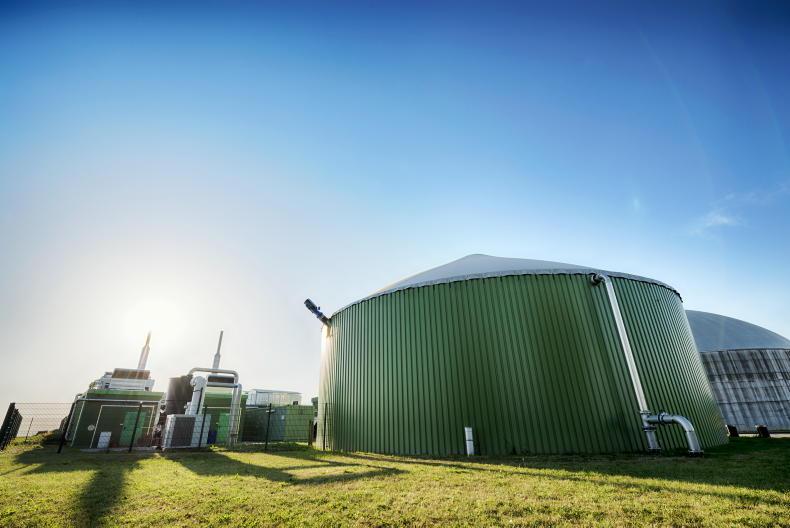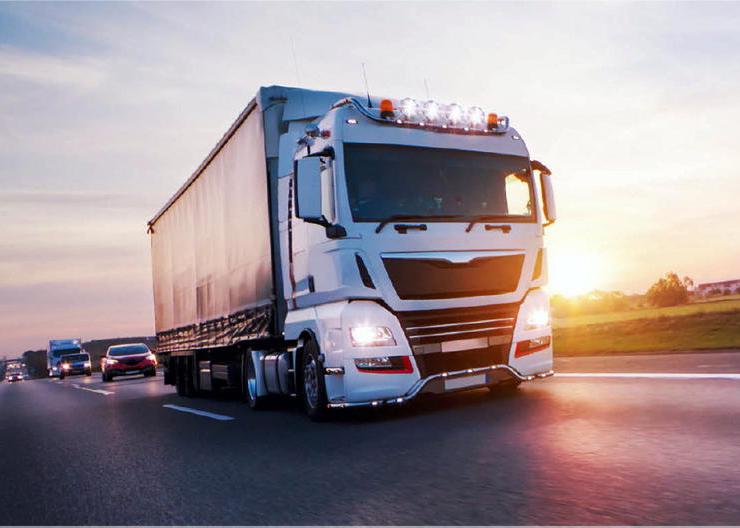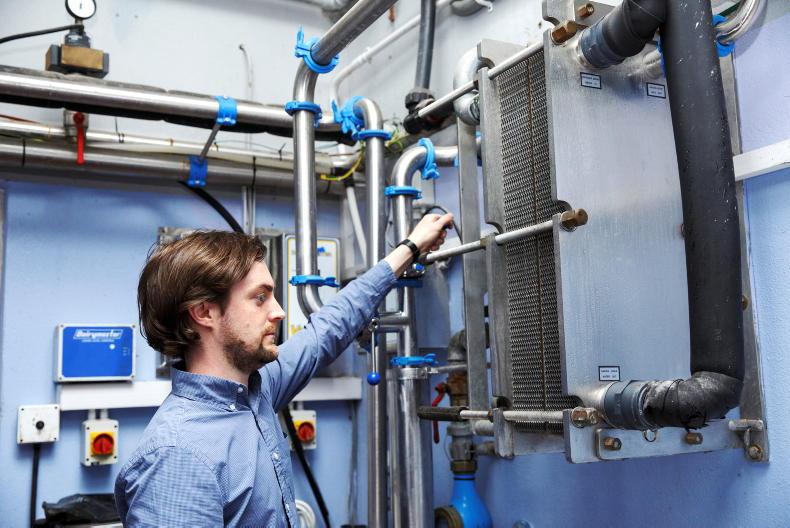Major changes to regulations, taxation and communication are needed in order to drive investment in solar PV on Irish farms according to a new report.
The recommendations were made by members of the joint committee on agriculture in their Solar Energy and the Agricultural Industry report, which was launched last week.
One of their key recommendations was the creation of a one-stop-shop service by the Department of Agriculture to manage all aspects of on-farm solar PV development.
The committee believes that the current system, which involves solar PV regulations and responsibilities split between various departments, has resulted in a lack of transparency and unnecessary complexity.
According to the report, the proposed one-stop-shop service would set specific solar targets for the agricultural sector, report to the Government, and crucially, collect farm solar PV generation data that is currently unaccounted for.
Selling back to the grid
Farmers who avail of TAMS to fund solar PV panels are not permitted to sell surplus electricity back to the grid.
The Department enforces this by restricting the size of panels eligible for grant aid to match your farm’s electricity use.
As no such restriction applies to panels funded by the SEAI, the committee has urged the Government to engage with the European Commission to allow farmers to sell surplus electricity back to the grid fully. This move would mean the elimination of the size restriction on TAMS-funded panels.
Who gets the credit?
The report acknowledges that the emissions savings from on-farm solar generation will primarily benefit the energy sector and have minimal impact on the agricultural sector’s Climate Action Plan target of reducing emissions by 25% by 2030. However, it will contribute to achieving the electricity sector’s target of reducing emissions by 75%.
Speaking to the Irish Farmers Journal, the committee’s Cathaoirleach, Deputy Jackie Cathal, stated that this doesn’t make sense and seems extremely unfair to the farming sector. The committee will be lobbying hard to get this changed.
However, farm renewable electricity production aligns with the AgClimatise target of achieving a 20% reduction in agricultural energy use and deploying at least 20% renewable energy technologies on farm by 2030.
Tax relief
In 2016, the Department of Finance changed the rules to allow farms to use up to 50% of their total land area for solar farm developments, while still being eligible to claim Capital Acquisition Tax relief on the value of the land when transferring it.
However, the committee has called on the Department of Finance to appraise the performance of this limit and consider increasing it, as it has acted as a disincentive to smaller farmers from engaging in solar farm developments, they stated.
However, they acknowledged that the limit is in place to discourage “passive farming” or armchair farmers.
In a submission to the committee, the IFA proposed that the calculations used to determine the area of land on which the solar panels are installed should only include the footprint of the structures mounting solar panels, ancillary equipment, and service roadways, excluding any area capable of being grazed by livestock either under, around, or in between panels.
The food versus fuel debate has arisen for various energy crops, forestry, anaerobic digestion, and now, it’s the turn of solar farms.
Last week, the Irish Grain Growers (IGG) group called for a conversation around the use of prime tillage land for solar farms as many tillage farmers have been battling losing rented or leased land.
In a recent Irish Farmers Journal tillage survey, 37% of respondents said they lost land this year and nearly half expected to lose land when their leases expired.

The food v fuel debate has arrived for solar farm developments.
Sixty five per cent of those who lost land said that a dairy farmer had secured the land, 16% went to another tillage farmer, while 5% went to beef farmers.
None of the 97 farmers surveyed said they had lost land to solar farms.

Conall Bolger, CEO of the ISEA.
Commenting on the IGG’s statement, Conall Bolger, CEO of the Irish Solar Energy Association (ISEA), said that farmers are free to make use of their land in any way that they deem fit.
Leasing
Leasing land for solar farms allows farmers to diversify their revenue sources and earn a good income, he said.
The planning process exists to determine whether a development is a suitable use for that land, offering people the opportunity to participate, he explains.
Inaccurate
Bolger said it is simply not accurate to claim that 3,000 acres have been “lost” to solar farms, as suggested by some tillage farmers.
The ISEA estimates that just 920 to 1,000ac of solar farms have been connected to the grid so far.
Furthermore, panels do not cover the entire area of leased land, so in reality the area under panels is likely to be closer to 410 to 550 acres, one-sixth of the figure quoted Bolger remarked.
He said the land between panels can still be used for grazing small animals or growing food.
Commenting on IGG’s statement, Pat Smith, chair of the Micro Renewable Energy Federation, said that there will always be competing challenges for a limited resource such as land.
He said that farmers should always have the right to make the best use of their resources for their business and family, whether that means generating renewable energy from technologies like solar PV, growing silage for biomethane production, or converting to forestry.
Smith believes that all stakeholders should accept this.
He acknowledged the need for balance and suggested that the market, grid capacity, and personal farm preferences will ensure that the allocation of land for energy uses remains a small percentage of the overall land area in the country.
However, he also acknowledged the case for restricting the amount of solar PV or forestry that can secure planning within a particular parish to ensure balance.
Smith said that the Government should do much more to incentivise farmers and businesses to install solar PV on rooftops as that resource has no impact on food production.
The Government has set a target for 8GW of solar PV by 2030, which requires a concerted effort across industry, agriculture and society to deliver.
The ISEA estimates that the ground-mounted solar portion of that target would require 24,000ac to 26,000ac of solar farms. This is the equivalent of 0.2% of Ireland’s total area of agricultural land or 3% of the current area under tillage.
Considering Ireland imports just over 70% of the energy we use (well over the EU average of 58%), solar can play a big part in the solution to this while requiring only a relatively small portion of land, Conall Bolger concluded.
Major changes to regulations, taxation and communication are needed in order to drive investment in solar PV on Irish farms according to a new report.
The recommendations were made by members of the joint committee on agriculture in their Solar Energy and the Agricultural Industry report, which was launched last week.
One of their key recommendations was the creation of a one-stop-shop service by the Department of Agriculture to manage all aspects of on-farm solar PV development.
The committee believes that the current system, which involves solar PV regulations and responsibilities split between various departments, has resulted in a lack of transparency and unnecessary complexity.
According to the report, the proposed one-stop-shop service would set specific solar targets for the agricultural sector, report to the Government, and crucially, collect farm solar PV generation data that is currently unaccounted for.
Selling back to the grid
Farmers who avail of TAMS to fund solar PV panels are not permitted to sell surplus electricity back to the grid.
The Department enforces this by restricting the size of panels eligible for grant aid to match your farm’s electricity use.
As no such restriction applies to panels funded by the SEAI, the committee has urged the Government to engage with the European Commission to allow farmers to sell surplus electricity back to the grid fully. This move would mean the elimination of the size restriction on TAMS-funded panels.
Who gets the credit?
The report acknowledges that the emissions savings from on-farm solar generation will primarily benefit the energy sector and have minimal impact on the agricultural sector’s Climate Action Plan target of reducing emissions by 25% by 2030. However, it will contribute to achieving the electricity sector’s target of reducing emissions by 75%.
Speaking to the Irish Farmers Journal, the committee’s Cathaoirleach, Deputy Jackie Cathal, stated that this doesn’t make sense and seems extremely unfair to the farming sector. The committee will be lobbying hard to get this changed.
However, farm renewable electricity production aligns with the AgClimatise target of achieving a 20% reduction in agricultural energy use and deploying at least 20% renewable energy technologies on farm by 2030.
Tax relief
In 2016, the Department of Finance changed the rules to allow farms to use up to 50% of their total land area for solar farm developments, while still being eligible to claim Capital Acquisition Tax relief on the value of the land when transferring it.
However, the committee has called on the Department of Finance to appraise the performance of this limit and consider increasing it, as it has acted as a disincentive to smaller farmers from engaging in solar farm developments, they stated.
However, they acknowledged that the limit is in place to discourage “passive farming” or armchair farmers.
In a submission to the committee, the IFA proposed that the calculations used to determine the area of land on which the solar panels are installed should only include the footprint of the structures mounting solar panels, ancillary equipment, and service roadways, excluding any area capable of being grazed by livestock either under, around, or in between panels.
The food versus fuel debate has arisen for various energy crops, forestry, anaerobic digestion, and now, it’s the turn of solar farms.
Last week, the Irish Grain Growers (IGG) group called for a conversation around the use of prime tillage land for solar farms as many tillage farmers have been battling losing rented or leased land.
In a recent Irish Farmers Journal tillage survey, 37% of respondents said they lost land this year and nearly half expected to lose land when their leases expired.

The food v fuel debate has arrived for solar farm developments.
Sixty five per cent of those who lost land said that a dairy farmer had secured the land, 16% went to another tillage farmer, while 5% went to beef farmers.
None of the 97 farmers surveyed said they had lost land to solar farms.

Conall Bolger, CEO of the ISEA.
Commenting on the IGG’s statement, Conall Bolger, CEO of the Irish Solar Energy Association (ISEA), said that farmers are free to make use of their land in any way that they deem fit.
Leasing
Leasing land for solar farms allows farmers to diversify their revenue sources and earn a good income, he said.
The planning process exists to determine whether a development is a suitable use for that land, offering people the opportunity to participate, he explains.
Inaccurate
Bolger said it is simply not accurate to claim that 3,000 acres have been “lost” to solar farms, as suggested by some tillage farmers.
The ISEA estimates that just 920 to 1,000ac of solar farms have been connected to the grid so far.
Furthermore, panels do not cover the entire area of leased land, so in reality the area under panels is likely to be closer to 410 to 550 acres, one-sixth of the figure quoted Bolger remarked.
He said the land between panels can still be used for grazing small animals or growing food.
Commenting on IGG’s statement, Pat Smith, chair of the Micro Renewable Energy Federation, said that there will always be competing challenges for a limited resource such as land.
He said that farmers should always have the right to make the best use of their resources for their business and family, whether that means generating renewable energy from technologies like solar PV, growing silage for biomethane production, or converting to forestry.
Smith believes that all stakeholders should accept this.
He acknowledged the need for balance and suggested that the market, grid capacity, and personal farm preferences will ensure that the allocation of land for energy uses remains a small percentage of the overall land area in the country.
However, he also acknowledged the case for restricting the amount of solar PV or forestry that can secure planning within a particular parish to ensure balance.
Smith said that the Government should do much more to incentivise farmers and businesses to install solar PV on rooftops as that resource has no impact on food production.
The Government has set a target for 8GW of solar PV by 2030, which requires a concerted effort across industry, agriculture and society to deliver.
The ISEA estimates that the ground-mounted solar portion of that target would require 24,000ac to 26,000ac of solar farms. This is the equivalent of 0.2% of Ireland’s total area of agricultural land or 3% of the current area under tillage.
Considering Ireland imports just over 70% of the energy we use (well over the EU average of 58%), solar can play a big part in the solution to this while requiring only a relatively small portion of land, Conall Bolger concluded.














SHARING OPTIONS